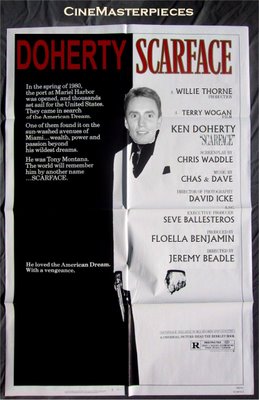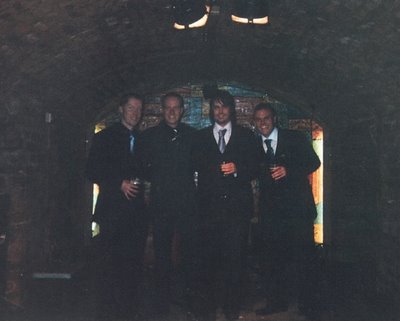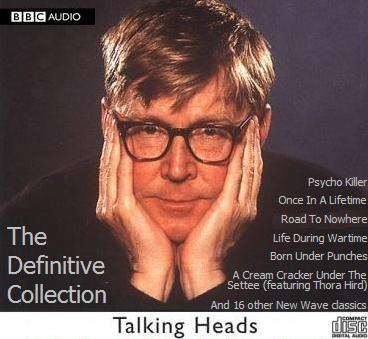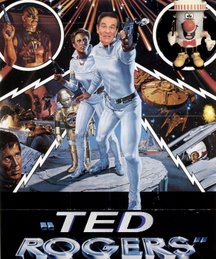Sunday, April 30, 2006
Friday, April 28, 2006
Wednesday, April 26, 2006
He's written that perfect.
Extracts from my forthcoming book, The History of Snooker, which will be released by Oxford University Press this autumn.
Antiquity
The origins of snooker are generally agreed to be British, and dating at least as far back as the Iron Age. In the area surrounding Stonehenge, spherical stones, believed to be early snooker balls, have been unearthed by archaeologists, along with what appear to be primitive iron cues and slate-bed tables. Beyond the archaeological evidence, we have no way of knowing what form this primitive form of billiards would have taken, although cave-paintings in the ancient Pictish settlement of Coch' ròd (in modern-day Scotland) show what appears to be a Pict warrior attempting to escape from a tricky full-ball snooker.
Early Middle-Ages
The first written description of our game comes from the Venerable Bede (AD 672-735). In his Lives of the Abbotts of Wearmouth and Jarrow, Bede details a particularly heated controversy between the twin monasteries over the correct interpretation of the miss rule. The conflict was eventually resolved by way of a Papal Bull, issued by Innocent XXIV in 712 AD.
It would appear that the game was very different in those days. Bede makes no mention of either the brown or pink ball, and his description of the playing-table led the great medieval scholar Silvino Francisco to hypothesise that it was a quadrilateral, with four pockets only.
Snooker and The Reformation
Snooker by no means escaped the upheaval of The Reformation. Many of the reformers objected to the ornate style of the contemporary playing equipment (gold cues etc), as well as the elaborate rituals which had come into being. Of particular controversy was the practice of the burning of incense every time a break of over 30 was made, and the announcing of scores in Latin. These perceived abuses were eventually outlawed by Elizabeth I and, despite some disquiet in the north (wooden cues were burnt in Durham Cathedral in protest), the playing of snooker returned to the simpler forms believed to be a truer reflection of the ancient traditions.
Victorian Innovations
The game we now know as snooker can only truly be said to have been established in the late 19th century, when the final break with other billiard forms was made. Various aristocrats in Imperial India codified the modern-day format, the chief architect being Lord Snooker of Beaconsfield, hence the modern name of the game.
Developments in the Early 20th Century
The game continued as the plaything of toffs until gradually also gaining popularity with gangsters in the East-End of London, and later other British cities. Basement snooker-halls became convenient theatres of gangland activity. On a healthier note, the growth in popularity of the game led to the introduction of organised competitions, including the Word Championship. This came to be dominated by Joe Davis (great-grandfather of current player Steve Davis), who won every world championship held between 1902 and 1968. His finest moment was perhaps the 1937 final where, aged 98, he beat the teenage Eddie Charlton 654 frames to 212, in a match which lasted 8 months.
The Television Boom
Just as snooker was seemingly becoming staid in the late 60s, the introduction of colour TV proved to be the catalyst for its re-invigoration. The BBC introduced a one-frame based competition called Pot Black, to show-off its new colour service on BBC2. This led to a great boom. This golden age of the 1970s and early 80s saw the emergence of many charismatic players. One instantly thinks of the Canadian triumvirate of Kirk Stevens, Bill Werbeniuk and Cliff Thorburn. Stevens a white-suit-wearing coke-snorting playboy; Werbeniuk a 35 stone lumberjack, who drank 30 pints of lager before a match, just to 'steady his cue-arm', and the suave mustachioed Thorburn, nicknamed 'The Grinder', on account of his habit of grinding himself against his cue, in a manner which scandalized Mary Whitehouse.
The most successful player to emerge in the early 80s was Steve Davis, the first ginger man to be shown on BBC television before the 9pm watershed. Davis's popularity changed the public's perception of ginger people, and he later became the first ginger man to be awarded an MBE (although some reactionaries were scandalized by this).
Davis was involved in the match which represents the very highpoint of snooker's popularity. The 1985 World Championship Final saw the entire population of the United Kingdom stay up till 4.00am to watch genial goggle-wearing Irishman Dennis Taylor beat Davis in a tense final-ball thriller. Thereafter it has to be admitted that the game has decreased in popularity. One reason for this was the emergence of Scottish teenager Stephen Hendry, a dour young man who nevertheless did not miss a single pot, in a single match, between 1988 and 1996. The new breed of players seemed to lack the individual charisma of the older, although the emergence of former sit-com actor Richard O'Sullivan, in the late 1990s, did provide a certain injection of excitement.
The Future
After deciding that calling a tournament 'The Embassy World Championship' encouraged, nay virtually forced, the great British public to instantly rush to the local Spar, buy 20 Regal Kingsize and take up smoking, the Blair government banned cigarette sponsorship, thus decimating the finances of the game. Whereas Terry Griffiths collected 21 million pounds for winning the 1979 World Championship, this year's winner will collect a paltry 950 pounds. This does not bode well for the future of the game, and nor does the regrettable ban on adverb usage, forced on to snooker commentators by the BBC hierarchy, in a desperate attempt to 'dumb down' and compete with the illiterate output of rival channels. There are some reasons to be cheerful though - the game retains its ability to surprise, such as during this year's championships when Nigel Bond spontaneously combusted during Frame 14 of his second round match with Graeme Dott.
Posted by
Paul McQuillan
at
6:35 pm
2
comments
![]()
Sunday, April 23, 2006
When I grow up, I'd like to work in a call-centre.

I heard a rumour that next year's London Marathon is to be re-named 'The London Snicker'. Just a rumour at this point . . .
Posted by
Paul McQuillan
at
10:04 pm
1 comments
![]()
Tuesday, April 18, 2006
I met a hula mistress somewhere in Waikiki, Well she was sellin' pineapple, playin' ukulele
Posted by
Paul McQuillan
at
4:43 pm
1 comments
![]()
Thursday, April 13, 2006
Yeah, yeah, yeah
Onstage (until we got told to get off) at a dimly-lit Cavern Club, Liverpool, last Saturday night: The new fab-four, on tour. Your blogmaster is the good-looking one second from the left:
Posted by
Paul McQuillan
at
5:43 pm
6
comments
![]()
Monday, April 10, 2006
Thursday, April 06, 2006
Wednesday, April 05, 2006
Gary Numan - Apologia Pro Vita Sua
Idea for a television programme: Chris Tarrant to host a gameshow based in the Middle East, entitled 'Oman Oman.'
The Blogmaster wishes to announce that he shall be away from Friday till Monday, visiting the home city of Derek Acorah and Tom O'Connor, including attending the Grand National on Saturday, where I hope to hang around anywhere I see a TV camera in the hope of getting 'on the telly'.
Posted by
Paul McQuillan
at
6:52 pm
1 comments
![]()
Sunday, April 02, 2006
Achtung! Neu Rasiermesser von USA!
New from Gillette. The very best shave a man can get.
The all-new Mach 12. Twelve precision, platinum-coated DLT blades, 28 micro-fins, aloe-vera and champagne talking lubrastrip, 18 carat gold handle. Each blade is mounted on a hydraulic suspension system based on Formula 1 racing-car designs and shaves progressively closer than the last, leaving you with a shave which John Craven called, "close". The new talk-o-lubrastrip™ tells you (in 8 languages) when your blades are nearing the end of their life, and also warns you should you press too hard whilst shaving. A 4GB mp3 player keeps this razor ahead of the competition - truly a razor for the 21st century - and beyond!
As used by Bill Oddie, Dave Lee Travis, Rolf Harris and Matthew Corbett
Replacement Blades: £38.99 for a pack of 3
Posted by
Paul McQuillan
at
10:19 pm
1 comments
![]()













